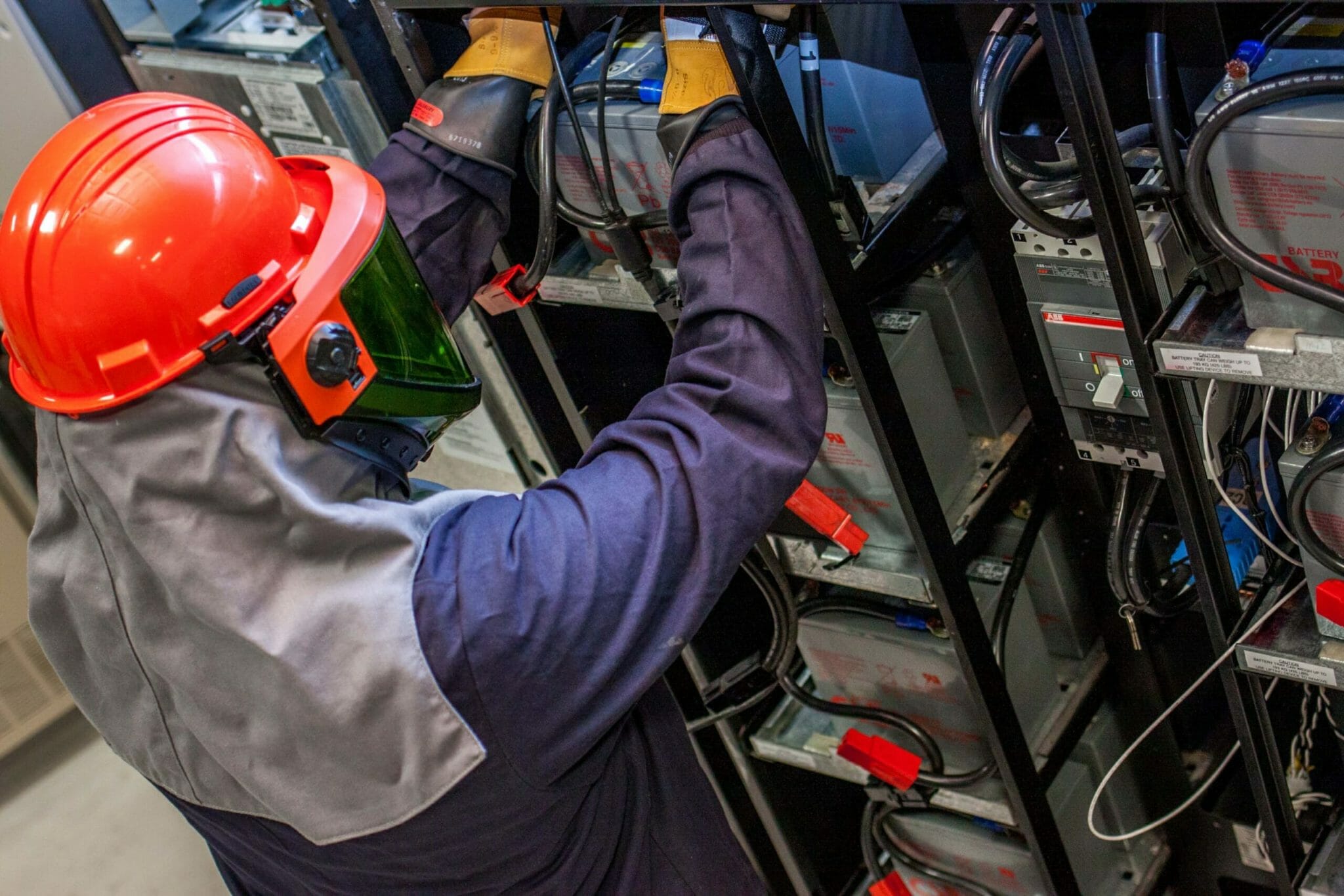
When it’s Time To Replace Your Aging UPS System…
Just like every other type of equipment, UPS systems have a useful service life before their reliability starts to diminish.

Smaller single-phase UPSs may only have a useful lifespan of 10-12 years. You can typically expect that larger online double conversion UPSs will provide you with 15 years of reliable service, provided that the recommended preventative maintenance and repairs have been performed. Most individuals will only have to complete 1-3 UPS replacements in their career, so walking into one can be a challenge. Read on to learn how Quality Power Solutions answers the question “What replacement unit is best for me?”
In preparation for this article, I spent some time with John Connor, one of our Technical Sales Engineers.
“Determining a replacement isn’t always simple” John stated. To start, let’s first consider the equipment the UPS is installed to protect. Over time, this can change dramatically with the UPS system remaining the same. There are times where a UPS system may have supported a large data center, and through virtualization, efficiency gains or a changing business climate, the equipment load demand may have changed.
Design criteria and best practices have also changed over the years. Our tolerance for downtime has essentially been eliminated. This means that our design many need to provide redundancy, or concurrent maintainability in UPS modules, or battery. Other factors should be considered, does the input voltage match the output voltage? Is there a neutral at the UPS input? Is one required on the output? Are there any transformers in the system? What is the purpose of those transformer(s)? The answers to these questions give us a good idea where to start.
We also need to determine the current and future projected load if those two numbers are different. Likely your critical UPS was installed 10 to 20+ years ago. We can almost guarantee that your power requirements have changed since then. Does your organization need to increase the capacity of the system due to anticipated growth or because you are acquiring new equipment that will need to be supported? Is your existing legacy UPS very lightly loaded and killing your data center’s energy efficiency? Perhaps now is a good time to ask to assess your electrical needs both now and in the future to included not just the UPS but also the electrical infrastructure that surrounds it (power distribution, cooling, etc.).
Once your power needs have been identified, we need to start to take a closer look at the infrastructure that surrounds your existing UPS.
- Footprint – What are the physical dimensions of the existing UPS? How much clearance do you have on each side? How about on top of the system? Legacy systems are almost always larger overall then their modern equivalents but that does not mean that the latter will always fit well in the available footprint. Modern UPSs are very often deeper and taller than their legacy counterparts which can make planning the new layout challenging.
- Maintenance Access – This item is related to the footprint, but it is often overlooked. Is side or rear access required for service? Having the required clearances to make needed repairs is critical. You don’t want to find out that the UPS needs to be physically moved in order to be repaired when your data center is unprotected.
- Air Flow – How does the cooling system in the existing unit function? Does it vent out the top or back? Does the new UPS you are considering require rear or top clearance in order for the fans to function correctly? Many legacy UPSs could be installed up against the wall and required no rear clearance. Modern UPSs are often designed to be in row with server racks and as such they may require rear access for cooling.
- Weight – Are you looking to make changes that will increase the system weight (i.e. increased runtime)? Is the system approximately the same weight but in a smaller footprint? That will change how the weight is distributed over your floor and may present a concern.
- Cable Entry – Is the existing UPS top or bottom fed? Where do the conductors exit the system? Is the existing wire of adequate length for the new UPS or does it need to be extended or modified?
- Budget – What type of UPS is your organization looking to purchase? Will only the best suffice or is that overkill for your needs? As with any industry, UPS systems come in varying levels of quality. Understanding what your needs are in terms of quality and budget helps us determine what options you may want to consider.
- Environment – Is ambient temperature in the existing UPS room a concern? VRLA batteries perform best at 77°F. You can expect up to a 50% reduction in service life for every 15°F increase in ambient temperature above 77°F. Have you experienced reduced battery life because your UPS is not in a conditioned space? Is your UPS located in a dirty environment and exposed to dust and debris on a regular basis? These conditions can lead to premature failure if your system was not designed to operate in them? There are solutions available today to combat these challenges but they need to be incorporated into the overall design.
Of course, this article is only a brief overview. There are other details that need to be considered when determining the best option for replacement. Quality Power Solutions would be thrilled to partner with your organization to help you navigate the process.
Once you have selected a replacement system, we will still need to finalize a plan for the installation. Click on the below article if you would like to learn more about that process. 12 Things Facility Managers Need to Know about Critical Power System Installation.
Let us know how we can be a resource to help you replace your aging UPS!
Published on Oct 04 2022
Last Updated on Oct 17 2023